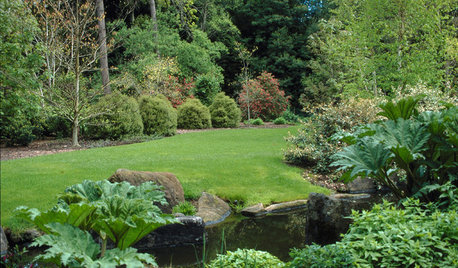Newbie Needing Soil Help
suvoth
10 years ago
Related Stories

GARDENING GUIDESYou Don't Need Prairie to Help Pollinators
Woodlands, marshes, deserts — pollinators are everywhere
Full Story
CONTAINER GARDENSContainer Gardening Basics: The Dirt on Soil
Learn the types of potting soil available and the best mixes to help your containers thrive
Full Story
FARM YOUR YARDHow to Get Good Soil for Your Edible Garden
The nutrients in your soil feed the plants that feed you. Here are tips on getting it right — just in time for planting season
Full Story
GARDENING GUIDESGardening Solutions for Dry, Sandy Soils
Has your desert or beachy site withered your gardening creativity? Try these ideas for a beautiful, easy-care landscape
Full Story
GARDENING GUIDESThe Poop Scoop: Enrich Your Soil With Good Old Manure
Get over the ick factor already — this natural super-ingredient for soil has so many benefits, you'll wonder why you ever went chemical
Full Story
GARDENING GUIDESHow to Pick a Mulch — and Why Your Soil Wants It
There's more to topdressing than shredded wood. Learn about mulch types, costs and design considerations here
Full Story
GARDENING GUIDESHouzz TV: Make a Worm Bin for Rich Soil and Happy Plants
A worm-powered compost bin that can fit under a sink turns food scraps into a powerful amendment for your garden. Here’s how to make one
Full Story
GARDENING GUIDESGreat Design Plant: Try Blue Bells for Blooms in Dry Soil
This shrub’s violet-blue flowers and silvery foliage brighten low-water gardens all year long
Full Story
GARDENING GUIDESGardening Solutions for Heavy Clay Soils
What’s a gardener to do with soil that’s easily compacted and has poor drainage? Find out here
Full Story







paleogardener
tapla (mid-Michigan, USDA z5b-6a)
Related Professionals
Alexandria Landscape Contractors · Edmond Landscape Contractors · Amesbury Landscape Contractors · Bainbridge Island Landscape Contractors · Dedham Landscape Contractors · Gainesville Landscape Contractors · Los Banos Landscape Contractors · Methuen Landscape Contractors · Mission Landscape Contractors · San Carlos Park Landscape Contractors · Shaker Heights Landscape Contractors · Whitehall Landscape Contractors · Yuba City Landscape Contractors · Batavia Decks, Patios & Outdoor Enclosures · Lebanon Decks, Patios & Outdoor EnclosuressuvothOriginal Author
Kimmsr
tapla (mid-Michigan, USDA z5b-6a)
suvothOriginal Author
livelydirt
suvothOriginal Author
tapla (mid-Michigan, USDA z5b-6a)
livelydirt
connie_cola
tapla (mid-Michigan, USDA z5b-6a)
livelydirt
tapla (mid-Michigan, USDA z5b-6a)
livelydirt
tapla (mid-Michigan, USDA z5b-6a)